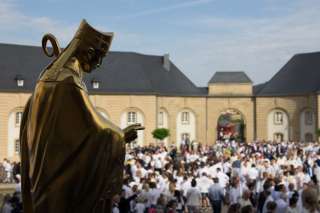The importance of intangible cultural heritage is not the cultural manifestation itself but rather the wealth of knowledge and skills that is transmitted through it from one generation to the next.
Intangible cultural heritage includes traditions or living expressions inherited from our ancestors and passed on to our descendants. This heritage includes oral traditions, the performing arts, social customs, rituals and festive events, knowledge and practices related to nature and the universe, or the knowledge and know-how of traditional handicrafts. Intangible cultural heritage as such can only be recognized by the communities, groups or individuals who create, maintain and pass it on.
Intangible cultural heritage is at once traditional, contemporary and dynamic. Since it also includes the rural and urban practices of today. It evolves because it is rooted in communities, and it depends on those whose knowledge of traditions, skills and customs is passed on from generation to generation or to other communities.
Whilst it is fragile, intangible cultural heritage is an important factor in maintaining cultural diversity in the face of growing globalization. Having an understanding of the intangible cultural heritage of different communities is indispensable to intercultural dialogue, and encourages respect for other ways of living.

The Hopping Procession of Echternach
The Hopping Procession of Echternach takes place every year on Whit Tuesday in homage to St Willibrord (658-739), a missionary from Ireland, founder of the Abbey of Echternach. It is difficult to determine the origin of this practice due to the lack of historical documents. It was first mentioned at the end of the 15th century. Some see the origin as related to the processions of the flagellants of the 13th and 14th centuries and explain dance as a way of preventing or curing seizures of certain nervous diseases such as epilepsy through homeopathic imitation of these movements. Others believe that the origin of the procession was due to a wish of the parishioners of the locality of Waxweiler in the "Eifel", following a great calamity. On the other hand, many commentators of the procession believe that the origin of the procession is to be considered in the context of the Christianization of our regions. It would be a transformed pagan rite, where dance, a universal expression of human feelings, would express the people's gratitude to St Willibrord for the benefits received. It is true that Father Thiofrid, around 1100, already mentioned a large gathering of pilgrims on the days of Pentecost without mentioning the dance. The procession has survived many prohibitions and each year brings together some 8,000 dancers in a friendly atmosphere to "pray with their feet" and continue the tradition.
The pilgrims line up in rows of 5, joined by the handkerchiefs or scarves they hold, folded in triangles. They move forward with hopping steps to the rhythm of the brass bands playing an old popular melody. The procession leads them through the narrow streets of Echternach to the tomb of St Willibrord in the crypt of the basilica.
On 16th November 2010, UNESCO’s intergovernmental Committee for the safeguarding of the intangible cultural heritage voted unanimously to place the Hopping Procession of Echternach on the list representing the intangible cultural heritage of humanity.

